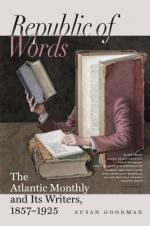customs of the European merchants at Surat, speaks
of tea as of something unfamiliar. The reasons
he gives for drinking both it and coffee are charmingly
incongruous, as is generally the case when men undertake
to find some solemn excuse for doing what they like.
“At our ordinary meetings every day we took
only
The, which is commonly used all over the
Indies, not only among those of the Country, but among
the
Dutch and
English, who take it as
a Drug that cleanses the stomach and digests the superfluous
humours, by a temperate heat particular thereto.
The Persians, instead of
The, drink their
Kahwa,
which cools and abates the natural heat which
The
preserves."[A] Of its first introduction into Europe
little is known. In 1517, King Emanuel of Portugal
sent a fleet of eight ships to China, and an embassy
to Peking; but it was not until after the formation
of the Dutch East India Company, in 1602, that the
use of tea became known on the Continent, and even
then, although the Hollanders paid much attention to
it, it made its way slowly for many years. The
first notice of it in England is found in Pepys’s
“Diary,” under date of September 25th,
1660,—as before quoted. In 1664, the
East India Company presented to the king, among other
“raretyes,” 2 lb. 2 oz. of “thea”;
and in 1667, they desire their agent at Bantam to
send “100 lb. waight of the best tey that he
can gett."[B] From this insignificant beginning the
importation has grown from year to year, until ninety
million pounds went to Great Britain in 1856, forty
million coming to the United States the same year.
[Footnote A: Mandelslo’s Voyages and
Travels into the East Indies, p. 18, ed. 1662.]
[Footnote B: Grant’s History of the
East India Company. London, 1813, p. 76.]
The “Edinburgh Review,” in an article
on this subject, says: “The progress of
this famous plant has been somewhat like the progress
of Truth;—suspected at first, though
very palatable to those who had the courage to taste
it; resisted as it encroached; abused as its popularity
seemed to spread; and establishing its triumph at last
in cheering the whole land, from the palace to the
cottage, only by the slow and resistless efforts of
time and its own virtues.”
Many substitutes for tea are in vogue among the Chinese,
but in general only the very lowest of the population
are debarred the use of the genuine article.
Being the universal drink, it is found at all times
in every house. Few are so poor that a simmering
tea-pot does not stand ever filled for the visitor.
It is invariably offered to strangers; and any omission
to do so is considered, and is usually intended, as
a slight. It appears to be preferred by the people
to any other beverage, even in the hottest weather;
and while Americans in the heats of July would gladly
resort to ice-water or lemonade, the Chinaman will
quench his thirst with large draughts of boiling tea.




